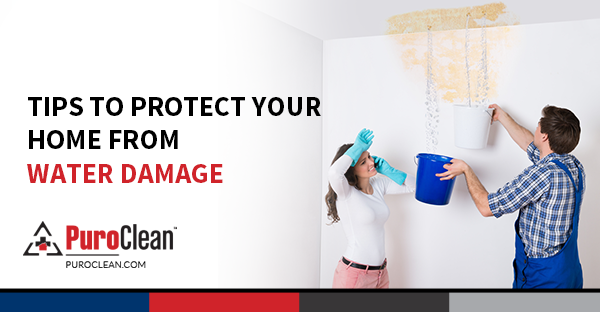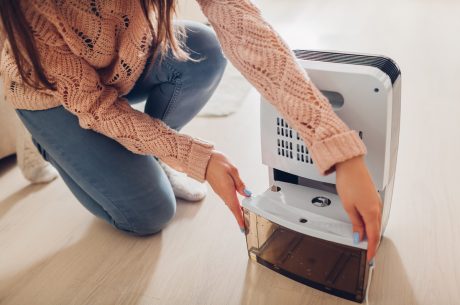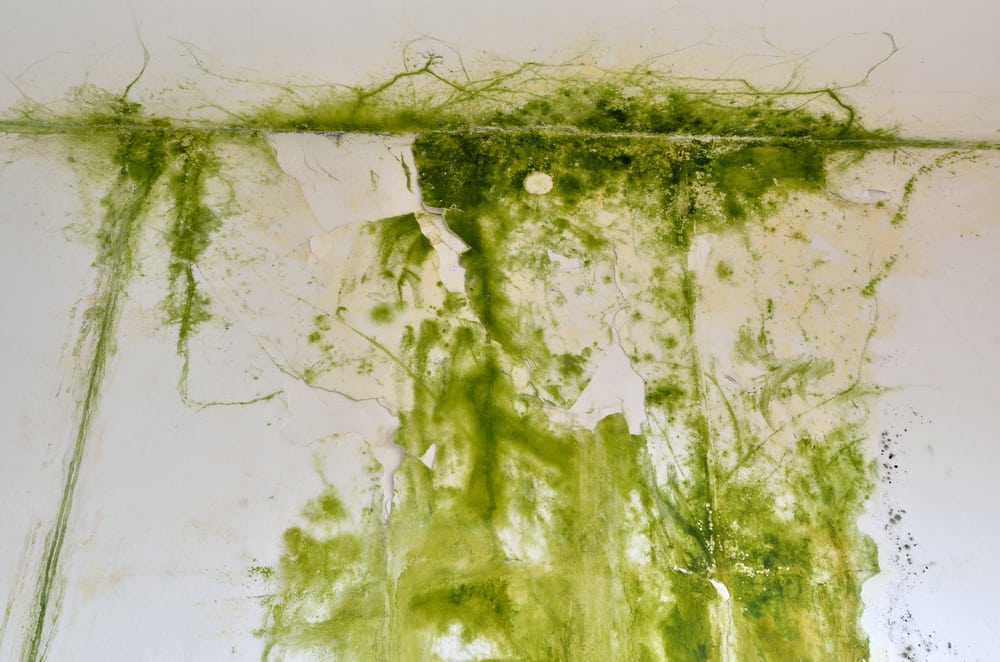A small amount of water can cause considerable damage to your home. When water finds its way into your property through the roof, basement or other area, the result is often extensive water damage and mold growth. Thus, knowing how to prevent water damage in your home is critical.
According to the Insurance Information Institute (III), about one in 50 insured homes has a property damage claim caused by water damage or freezing each year. The average American uses between 80–100 gallons of water a day, so it’s no wonder that some of it goes “astray” and leads to water damage.
While homeowners insurance covers many losses, it doesn’t cover all of them. And, most of the time, these problems require professional water damage restoration services. A better “solution”, however, is to prevent water damage from occurring in the first place!
Take a few steps to avoid going through the heartache (and wallet-ache) of experiencing water damage. Check out common water damage scenarios and tips on how to prevent water damage in your home.
Washing Machine Hoses
Incoming washing machine hoses are one of the most common sources of flood water damage in a residence. One broken hose can release a tremendous amount of water in a few hours.
Furthermore, the hose is under constant pressure 24/7; inevitably, it will weaken and burst over time. Granted, the water comes from a “clean” source, but it flows everywhere when it bursts.
The best way to prevent washing machine water damage is to turn the hose valves on and off as you start and finish washing clothes.
Also, replace the hoses every five years as manufacturers commonly recommend. Choose wire-braided, high-pressure hoses over standard hoses. You can get them at almost any hardware supply store. It’s not a question of “if” but “when” a hose will burst. So, replace them now!
Other Appliances and Fixtures
The next step in learning how to prevent water damage is maintaining your appliances and fixtures that use water. Continual, slow leaks can migrate under vinyl, stone, and other flooring without notice. Keep in mind that a homeowners insurance policy often doesn’t cover water damage that occurs over an extended period due to poor maintenance.
So, move the refrigerator and other appliances and check for any damage or signs of a leak regularly. Check water line connections that attach to the dishwasher, reverse osmosis line or any other water line. Also, leave a gap of three to four inches between the washing machine or refrigerator and the wall. Here’s another idea: don’t run appliances when going to sleep or leaving the home.
In addition, inspect your home for leaks in areas such as ceilings, under pipes inside sink cabinets, or around sinks and toilets. Get under the sink and feel the lines for moisture. Look on the deck of the cabinet for any drips that are collecting or for signs of wet/damaged materials. Immediately fix water leaks and replaced damaged hoses to prevent serious water damage and mold growth.
Ice Dams
How Ice Dams Form
Ice damming can cause water to enter a house due to several reasons. The distance from the eve of a roof to the wall is called the soffit. It is the outside perimeter area that overhangs and protects the walls from water when it rains.
When insulation in the attic does not reach the exterior wall, the heat in the home in the winter goes from the interior of the house to the attic. Close to this area of heat loss is the actual roof and a little heat from this situation (improper insulation) can melt snow on the roof, which then runs into the gutter.
At night or other times of colder temperatures, the melted snow refreezes, forming ice in the gutter. Once the gutter is full, the ice begins to dam and then refreeze. If left unchecked, this ice dam builds back up the slope of the roof. In time, the freezing/melting ice can penetrate under the shingles and sheathing, and into the attic/living area.
Water damage then appears on the ceilings of the rooms under this area. Again, this is a maintenance/construction issue, and a homeowners insurance policy may not cover the water damage repairs.
How to Prevent Water Damage from Ice Dams
How can you prevent this type of water damage? The answer is to insulate and ventilate your attic properly.
You may need to have a professional insulation company inspect the attic insulation and assess its R-value. They will most likely recommend blowing in more insulation to protect the home from heat loss.
Besides the new insulation, you will also need to make sure to ventilate the attic. Air movement prevents condensation and helps eliminate other potential water damage problems.
How to Prevent Water Damage from Toilet Tanks
A leaky toilet can waste as much as 100 gallons of water each day. Test your toilets for leaks by putting a few drops of food coloring in the tank, then watch for a few minutes. If the color appears in the bowl, you have a leak. Repair your toilet, and it will save you time, money, and heartache from unnecessary potential water damage.
Other Tips on How to Prevent Water Damage
- Clean and maintain gutters and downspouts. If there are leaves, sticks, debris or bird’s nests in your gutters, water may overflow onto the side of your house. In your gutter cleaning routine, check for cracks or sagging, and have them repaired.
- Make sure downspouts extend at least 10 feet away from your home’s foundation. The ground around the foundation should also be sloped at least six inches over a 10-foot span away from the house to avoid basement flooding.
- Have your roof annually checked for cracked or missing shingles, deteriorated flashing, pooling water, and missing granules.
- Install a sump pump with a battery backup system. Maintain and test the sump pump according to the manufacturer’s instructions and remove any debris that may block the water inlet screen. Replace batteries should every two–three years.
- Install backflow valves and standpipes at all basement drain locations, sinks, and toilets. These mechanisms automatically prevent sewage from backing up into your home.
- Don’t pour grease down the sink as it can cling to pipes and cause blockage, even if you rinse the drain with hot water afterwards. The best way to get rid of grease is to pour it into an empty jar, refrigerate it, then discard it into the trash.
- If your water bill is unusually high and you don’t know why, this may be a sign that some pipes are leaking in your home. In this case, hire a professional plumber to detect and repair damaged pipes.
- Turn off the water supply valve when going on vacation. Ensure you can turn on/off all the supply valves when needed.
Final Thoughts
There are many ways your home can suffer water damage and require water remediation and mold removal services. Paying attention to leaks and maintaining your roof, gutters, basement, and plumbing system are essential in knowing how to prevent water damage. For professional water damage restoration and mold remediation services, contact your local PuroClean office.




 PuroClean of East Fresno
PuroClean of East Fresno